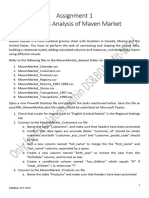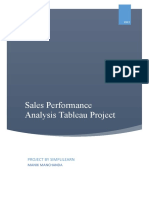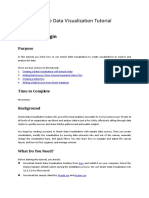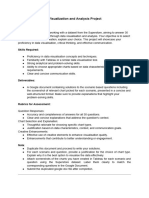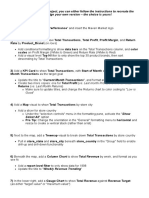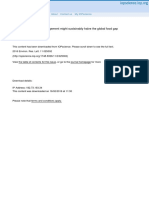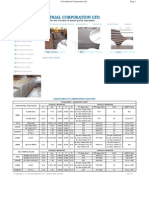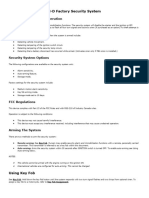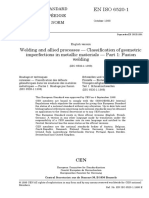0% found this document useful (0 votes)
79 views3 pagesOAC Assignment Level3
The document outlines a series of tasks aimed at teaching users how to utilize Oracle Data Visualization Desktop for data analysis and visualization. It covers importing datasets, creating various visualizations like bar charts and scatter plots, performing customer segmentation, and analyzing sales trends and profitability. Additionally, it includes instructions for creating interactive dashboards and data flows in Oracle Analytics Cloud.
Uploaded by
Nikitha PoleCopyright
© © All Rights Reserved
We take content rights seriously. If you suspect this is your content, claim it here.
Available Formats
Download as DOCX, PDF, TXT or read online on Scribd
0% found this document useful (0 votes)
79 views3 pagesOAC Assignment Level3
The document outlines a series of tasks aimed at teaching users how to utilize Oracle Data Visualization Desktop for data analysis and visualization. It covers importing datasets, creating various visualizations like bar charts and scatter plots, performing customer segmentation, and analyzing sales trends and profitability. Additionally, it includes instructions for creating interactive dashboards and data flows in Oracle Analytics Cloud.
Uploaded by
Nikitha PoleCopyright
© © All Rights Reserved
We take content rights seriously. If you suspect this is your content, claim it here.
Available Formats
Download as DOCX, PDF, TXT or read online on Scribd
/ 3








